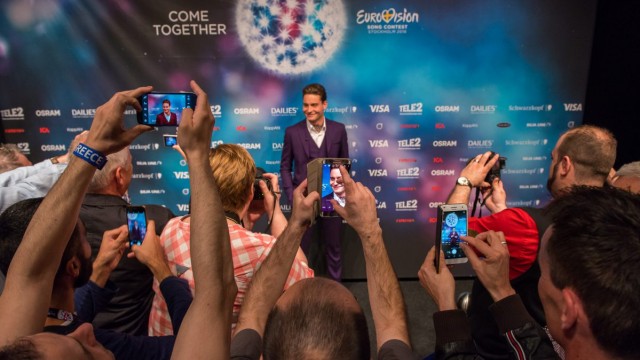For all of the things that I love about Eurovision (the multiculturalism, the music, the technology, the fandom), there’s one thing that always breaks my heart just a little bit: the regimented nature of the performances.
I certainly understand the reasoning why; without detailed choreography, camera angles can’t be arranged properly. Without knowing what an artist is wearing, lighting can’t be optimized for a dress to “pop”. Without having a detailed list of the pyros to come, people could get seriously hurt. And (as much as it pains me to say) without having pre-recorded instruments, issues like suddenly-snapped guitar strings, frayed violin bows, and broken drumsticks are no longer problems.
Because of this, it’s so rare and refreshing to see an artist take the risk to break out of the routine of rehearsed performance. When every note is nailed down, artists gain a sense of security, but lose the potential for an organic connection with the song and audience.
The Sound Of Experimentation
The first time I personally saw an artist take some sort of licence with their song was in 2012, when Estonia’s Ott Lepland never sang the same version of ‘Kuula’ twice. His physical performance was very static, but that didn’t mean his song had to be. He not only improvised, but he took an unmistakable joy in doing so. Always grinning from ear to ear, he constantly experimented with how he approached his phrases, playing with the notes and treating his sheet music as simply a suggestion. By the time his performances counted, the song felt less clinical and more comfortably worn-in.
This year, we see Australia’s Dami Im take the plunge and let her vocals run free. After the second chorus, she diverges from the studio version and tests out new patterns. It will be interesting to see how wild or conservative she stays on the night of her jury final or televised shows, and if there’s any marked difference between the two.
Take A Moment of Silence…
There’s another notable bit of improvisation from a 2016 act, as well. Douwe Bob from the Netherlands is taking the bold step to provide a full ten seconds of silence near the end of his song. He said in a press conference that it was an artistic choice, and a way to honor the audience by letting them have a blank canvas to leave their mark upon. It’s a refreshing change from the down-to-the-second routines that leave us feeling secure, but coldly clinical.

Douwe Bob, giving the people what they want. (Credit: Anna Velikova, EBU)
There is an inherent risk when you leave things up to chance. Douwe Bob’s ten seconds of mystery could be filled with the audience singing along, cheering, mumbling awkwardly, throwing rotten tomatoes (if security allows them to be brought in), or any one of a million other outcomes…but he’s taking the chance to leave it up to the crowd at his feet. Furthermore, it will be up to the camera crew here at the Globen to think on its feet and record whatever that action is going to be, whether it’s good, bad, or ugly.
Risk is scary; stepping outside of the secure scaffolding of rehearsed routines can leave a performer vulnerable to slip-ups, but the rush of adrenaline, and the potential for an unexpected reward, can make the danger more than worth the trepidation.
(For a deeper look into authenticity and construction at Eurovision, check out Ellie Chalkey’s upcoming article, right here at ESC Insight.)










I’m praying for Douwe Bob’s sake that the crowd sing his song out loud or maybe cheer…
I hope for his sake it’s not total silence or hecklers shouting “You’re supposed to be singing, mate”…